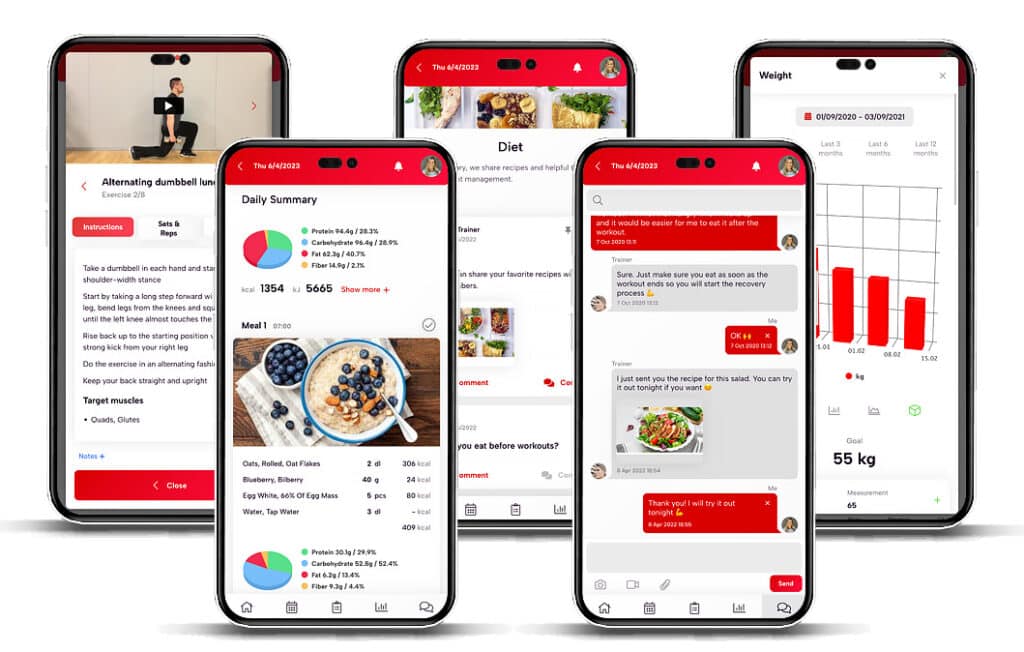Set SMART goals. Choose compound exercises like squats and lunges. Incorporate both HIIT and LISS cardio. Plan for 2-5 sets of 8-15 reps, resting 1-2 minutes between sets. Track your progress, adjusting weights and exercises as needed.
Remember that consistency and proper form are key for preventing injuries and achieving your goals. Understanding the nuances of program design unlocks even greater potential.
Defining Your Fitness Goals
Let’s get you laser-focused on your fitness goals. We don’t have time for vague aspirations; we need a concrete plan, and that starts with the SMART framework. This isn’t some fluffy fitness philosophy; it’s the blueprint for success.
Defining Your SMART Fitness Goals:
You need to be specific. “Get in shape” is useless. Instead, aim for something like: “Run a 5k in under 30 minutes.” See the difference? That’s specific.
- Specific: What exactly do you want to achieve? Lose 10 pounds? Increase your bench press by 20 pounds? Run a marathon? Be precise. Don’t settle for generalizations.
- Measurable: How will you track your progress? Use a scale, a measuring tape, a fitness tracker, a training log – choose your method and stick to it. Regularly track your weight, body fat percentage, or reps and sets in your workout log.
- Attainable: Are your goals realistic given your current fitness level and available time? Jumping from zero to marathon runner in three months is unrealistic. Start small, build gradually.
- Relevant: Do these goals align with your overall health and well-being? If losing weight is your goal, but you hate running and it’s not sustainable for you, re-evaluate. It needs to fit your lifestyle. Perhaps cycling or swimming would be better alternatives.
- Timely: Set deadlines. “Lose 10 pounds” is vague. “Lose 10 pounds by [Specific Date]” is actionable. Setting deadlines creates urgency and keeps you motivated.
Prioritizing Your Goals: Short-Term Wins, Long-Term Vision
Let’s talk strategy. Short-term goals fuel your motivation. Think fitting into that dress for a wedding in two months. The immediate gratification keeps you moving forward in your daily workouts. But, long-term goals provide the direction and purpose–achieving improved cardiovascular health, which is crucial for the long run.
- Short-Term Goals: These are your quick wins, boosting your confidence and momentum. Perfect for building a strong foundation and maintaining enthusiasm throughout your fitness journey. Examples: Fitting into a smaller dress size, completing a specific race, mastering a particular exercise.
- Long-Term Goals: These are your bigger-picture aspirations, the overarching reasons you’re embarking on this journey. Examples: Improving heart health, increasing strength to help with daily tasks, increasing energy levels.
Aligning Goals With Your Reality: Time, Resources, and Current Fitness Level
This is critical. Your goals must be realistic within the bounds of your life. Do you have 30 minutes a day, an hour, or just 15 minutes? That dictates what can be achieved realistically. If you’re a total beginner, you can’t expect to run a marathon your first year.
- Time Assessment: Be honest about how much time you can realistically devote to working out each week. Schedule your workout on your calendar as a non-negotiable appointment with yourself.
- Resource Assessment: Do you have access to a gym, or will you mostly workout at home? Think about what resources are readily available to support your goals, such as nutritional supplements, equipment, apps, and social support.
- Current Fitness Level: Start where you are. Don’t compare yourself to others. Focus on incremental improvement. Celebrate small wins, as these successes will be essential to boosting your morale throughout your fitness journey.
Regular Review and Adjustment: The Key to Long-Term Success
Your journey might require recalibration. Life happens. Injuries can occur. Goals might change. Regularly reviewing and adjusting your plans ensures continued engagement.
- Regular Check-Ins: Schedule weekly or monthly reviews of your progress. Are you on track? Do you need to adjust your goals or strategies? Don’t be afraid to modify your fitness goals – flexibility is crucial for long-term success.
- Accountability Partners: Partner with a friend who’s similar goals to provide support, motivation, and accountability.
Seek Expert Guidance: Healthcare Professionals and Certified Trainers
Don’t hesitate to reach out for expert support. A doctor can help you identify any underlying health conditions that affect your fitness plan. A certified personal trainer can create a safe, detailed, and personalized workout plan for you, accounting for your limits and needs. They can assist in overcoming obstacles (and plateauing!), and ensure you’ll reach your true potential safely.
Choosing the Right Exercises: Unlock Your Strength Potential—Now
Look, you’re here because you want results, and fast. We don’t have time for fluff. Let’s cut to the chase on building a workout plan that’ll sculpt your physique and boost your strength.
The key? Smart exercise selection. Forget generic routines. This is about strategic exercise choices designed to maximize your time and effort.
We’re talking compound movements first. These aren’t just some random exercises; they’re the cornerstone of efficient strength training.
Think squats, lunges, deadlifts, bench presses, and rows. Why? Because they simultaneously work multiple muscle groups, blasting calories and building strength faster than isolation exercises ever could.
Consider this: A single set of squats engages your quads, hamstrings, glutes, core—even your back! That’s efficiency at its finest. Don’t waste precious training time on exercises that only work one muscle group at a time.
- Squats: Targets quads, hamstrings, glutes, and core. Variations include goblet squats, front squats, and barbell back squats to challenge yourself progressively.
- Lunges: Works quads, hamstrings, glutes, and improves balance. Try forward, reverse, and lateral lunges for comprehensive leg development.
- Deadlifts: A full-body powerhouse exercise that strengthens your back, hamstrings, glutes, and forearms. Romanian deadlifts and sumo deadlifts offer variations.
- Bench Press: Builds chest, shoulders, and triceps. Incorporate incline and decline variations to target different muscle fibers.
- Rows: Strengthens your back, biceps, and forearms. Bent-over rows, seated cable rows, and dumbbell rows provide excellent variety.
But we’re not done yet. Even the most dedicated lifter needs accessible options. This is where bodyweight exercises shine. Push-ups, dips, and planks are your secret weapons for building strength anywhere, anytime. Perfect for beginners, travel workouts, or supplementing your weight training—they provide incredible versatility and require zero equipment.
- Push-ups: Works chest, shoulders, and triceps. Modify on your knees if needed, and progress to decline push-ups for an added challenge.
- Dips: Targets triceps, shoulders, and chest. Use a chair or bench for support initially.
- Planks: Builds core strength and improves stability. Hold for as long as you can maintain proper form.
Remember, targeting major muscle groups is paramount. This means focusing your strength training on your legs (quads, hamstrings, glutes), chest, back, shoulders, and core. A balanced approach is crucial for injury prevention and overall strength development.
Think of it like building a house—you need a strong foundation (legs and core) and supporting structures (back and chest) for sustainable growth. Ignoring any of these critical areas creates weaknesses and imbalances.
And here’s a crucial secret to consistent progress: shake things up every 4-6 weeks. Your body adapts, which leads to plateaus. To continuously challenge your muscles, avoid getting stuck in a rut. For example, swap bench presses for overhead presses, or replace bicep curls with hammer curls. This keeps your muscles guessing and prevents stagnation.
Finally—progressive overload. This is non-negotiable for continued strength building. Gradually increase your weight, reps, or sets to force your muscles to adapt and grow stronger. This consistent, progressive challenge is the key to seeing continuous results. Don’t just go through the motions—push your limits safely and intelligently. This is how you sculpt the body you’ve always wanted.
Structuring Your Workouts: A Time-Sensitive Guide to Results
Listen up, because this isn’t your average workout plan. We’re talking about strategically engineered sessions designed to sculpt your physique, boost your metabolism, and leave you feeling empowered. Time is precious, so let’s make every minute count.
Your workouts need a solid foundation—a framework that prevents wasted effort and ensures you see real results. We’re building that framework now.
The Power of Compound Movements
Forget endless isolation exercises. You need to prioritize compound movements – exercises that engage multiple muscle groups simultaneously. Think squats, deadlifts, bench presses, overhead presses, and rows. These are the heavy hitters that build strength, burn calories, and sculpt a lean, strong body.
- Why Compound Exercises? They stimulate more muscle fibers, leading to greater hormonal response and efficient calorie burning. This translates to increased muscle growth and a faster metabolism, even when you’re resting!
- Example: Instead of isolating biceps, incorporate rows which also work your back, shoulders, and core.
Integrating Cardio: HIIT and LISS for Optimal Results
Cardio isn’t just about burning calories; it enhances your overall fitness and complements your strength training. I recommend a balanced approach using High-Intensity Interval Training (HIIT) and Low-Intensity Steady-State Cardio (LISS).
- HIIT: Short bursts of intense exercise followed by brief recovery periods. Think sprints, burpees, jump squats. This is amazing for fat burning and boosting your metabolism.
- LISS: Sustained, moderate-intensity exercise over a longer duration. This could be a brisk walk, cycling, or swimming. This enhances cardiovascular health and aids in recovery.
- The Balance: Aim for a mix of both. Two HIIT sessions a week combined with two LISS sessions will provide fantastic results.
Weight Training: The Precision Approach
Precision is key when it comes to lifting weights. Your weight training sessions should be focused and efficient. We aren’t talking endless hours in the gym; we’re aiming for quality over quantity.
- Session Duration: 45-60 minutes, maximum.
- Sets and Reps: 2-5 sets of 8-15 repetitions per exercise. This range optimally builds both strength and muscle mass.
- Rest: 1-2 minutes between sets. Avoid excessive rest, as this can hinder muscle growth.
- Example: For squats, you might do 3 sets of 12 reps, resting for 90 seconds between sets.
Recovery: The Unsung Hero of Muscle Growth
This isn’t optional; it’s paramount. Muscle growth happens during recovery, not during the workout itself. Neglecting recovery will severely limit your progress.
- Rest Between Sessions: At least 48 hours between sessions targeting the same muscle groups.
- Sleep: Aim for 7-9 hours of quality sleep per night. Your body repairs and rebuilds muscle tissue during sleep, making it crucial for growth.
Avoiding Plateaus: Keep Your Body Guessing
Muscle adaptation is real. If you keep doing the same workout, your progress will eventually stagnate. This is where strategic variation comes in.
- Exercise Variation: Every 4-6 weeks, switch up your exercises. Incorporate different variations of squats, or different types of cardio.
- Training Techniques: Introduce techniques like supersets (performing two exercises back-to-back with minimal rest) or drop sets (reducing weight and continuing reps until failure) to shock your muscles and continue stimulating growth.
This structured approach will accelerate your progress. Remember, consistency and strategic planning are your allies in this journey. Don’t waste time – start today.
Setting Reps, Sets, and Rest
Let’s get you building the body you want, now. Forget generic workout plans; we’re crafting a strategy specific to your goals. We’re talking reps, sets, and rest periods – the nitty-gritty that actually delivers results.
You need to know exactly how many repetitions (reps) to do for each exercise to achieve your goals. This isn’t guesswork; it’s science.
- Strength: Aim for 1-5 reps per set. Think heavy weight, controlled movements. This isn’t about churning out endless reps; it’s about pushing your limits within that 1-5 rep range. I’ve seen women achieve incredible strength gains with this method.
- Hypertrophy (Muscle Growth): Here, we’re in the 6-12 rep range. You’ll still be challenging yourself, but with slightly lighter weight than in strength training, allowing for more reps. This is when you feel that satisfying burn. You need that stimulus for growth.
- Endurance: More reps are essential. Think 12 or more reps per set. You’ll use significantly lighter weight; focus is on staying in constant movement and building stamina. This is perfect for sculpting lean muscle.
Choosing the Right Number of Sets
The number of sets matters equally as much as reps. A typical workout plan will incorporate 2-5 sets per exercise, totaling 10-20 sets for your whole routine. Listen to your body, though.
If you’re constantly feeling fatigued and not recovering properly, consider reducing sets temporarily, not reps, until your body adapts.
- Example: Let’s say you’re focusing on squats. You might do 3 sets of 8 reps (hypertrophy) with 2-3 minutes of rest between sets. However, if you’re training for strength, your squat workout might be 3 sets of 3 reps with longer rest periods.
Mastering Your Rest Periods
Rest isn’t wasted time; it’s crucial for recovery and maximizing results. Rest periods directly influence training intensity.
- Strength: Prioritize ample rest – 3-5 minutes between sets. This long rest gives your muscles the time to recharge for your heavy lifts.
- Hypertrophy: Shorten your rest periods slightly to 2-3 minutes. This keeps your heart rate elevated and promotes muscle growth.
- Endurance: Minimize rest – less than one minute between sets. Quick rest times maintain a high intensity and improve stamina.
Keep this in mind: these are guidelines, not rules etched in stone. Pay attention to what your body tells you.
If you find yourself constantly fatigued, or if your form suffers due to insufficient rest, adjust the rest periods. Shortening your rest periods increases intensity significantly, forcing you to push harder and work at a higher intensity, but only do this when you’ve sufficiently trained your body.
Tracking Your Progress: Don’t Waste Another Second
Ignoring your progress is like navigating without a map – you might get somewhere, but it’s highly unlikely to be where you want to go.
You need a system, and I’m about to give you the insider secrets to build one.
We’re talking about more than just stepping on the scale. That number is just one piece of a complex puzzle.
We’re aiming for a comprehensive understanding of your fitness journey – one that reveals real, actionable insights.
Measurement Methods: Beyond the Scale
Forget relying solely on the scale. It’s a blunt instrument. Body weight fluctuates based on water retention, muscle mass, and even what you ate for dinner.
Instead, let’s build a multi-faceted tracking strategy:
- Progress Photos: Take photos in the same lighting and clothing (a sports bra and leggings work perfectly) every two weeks, from the front, side, and back. The visual evidence is often more motivating than a number on a scale. Don’t judge yourself initially! Just capture the data.
- Body Measurements: Use a measuring tape to track changes in your waist, hips, thighs, and arms. This provides much more precise data than a scale can provide alone. Consistent measurements reveal subtle but important changes.
- Strength Gains: Record the weight you lift and repetitions you complete for each exercise. This demonstrates your progress beyond merely how your clothes fit. Increasing your weights or reps show real strength development.
- Performance Metrics: If you’re doing cardio, log your distance, time, pace, or heart rate. Track increases in speed, distance, or reduced exercise recovery time.
Harnessing the Power of Data: Log It All
Download a fitness app (I recommend [Name a reputable fitness app], it integrates beautifully with other health trackers). Or use a simple notebook.
The real magic comes from regularly reviewing your data.
Every week, take a few minutes to look back at your measurements, photos, and workout logs. Look for trends. Are you plateauing? Need to increase weights? Are your cardio sessions improving?
If you do, you know exactly what adjustments need to be made; you’re not relying on guesswork.
Interpreting Your Results: What It All Means
Don’t just collect data; understand it.
A slight increase in weight coupled with decreased body fat percentage and improved strength is a clear indicator of muscle gain – exactly what you want.
Conversely, a decrease in strength and measurements with no change in weight might point to a need for improved nutrition or more intense workouts.
Here’s where your judgment comes in: Avoid getting caught up in daily fluctuations. Step back, look at the bigger picture across multiple weeks or months. The true picture will emerge. Consistency and patience are key.
The Time is Now
Don’t delay. Start tracking today. It’s the quickest path to visible results. Choose your tracking methods and start gathering measurements within the next 24 hours. You’ve got this. You’re already doing the hard work. Now let’s make it count.
Adjusting Your Plan
Let’s talk about adjusting your workout plan—because a static plan is a recipe for plateaus and, worse, injury. We’re going to make sure your plan is dynamic, responsive, and gets you results. Time is precious, so let’s dive into the specifics.
Listening to Your Body: Recovery is Key
Ignoring your body’s signals is a fast track to burnout. Persistent soreness isn’t a badge of honor; it’s a warning. Remember, your muscles rebuild themselves during rest. If you’re consistently stiff and fatigued, you’re not allowing for adequate recovery. Cut back on workout frequency. Aim for at least 48 hours of rest between heavy leg days or intense upper body sessions. This isn’t about being lazy; it’s about optimizing your gains.
- Example: If you’re currently training six days a week, try dropping to four, focusing on quality over quantity.
- Prioritize sleep! Aim for 7-9 hours of quality sleep nightly. This is when muscle repair and hormonal balance happens – essential for progress. Consider active recovery**, such as light cardio or stretching, on your rest days to promote blood flow and reduce stiffness.
Rep Ranges and Set Schemes: Tailoring Your Approach
Understanding rep ranges is crucial for hitting your goals. We’re not doing this arbitrarily – this is about maximizing muscle growth and strength development.
Strength: 1-5 reps, 2-5 sets. This is heavy lifting; focus on perfect form to avoid injury. Think big compound movements like squats, deadlifts, and bench presses.
- Hypertrophy (muscle growth): 6-12 reps, 3-4 sets. This range stimulates muscle growth efficiently. Think movements like bicep curls, lateral raises, and leg presses.
- Endurance: 12+ reps, 2-3 sets. This will boost your stamina and overall fitness. Use lighter weights and focus on maintaining good form throughout the higher rep counts.
Don’t be afraid to adjust these depending on your response. Are you breezing through 12 reps when aiming for hypertrophy? Increase the weight or resistance. Are you struggling to complete 6? Lighten the load. Listen to your body’s feedback—it’s the best progress indicator.
Progressive Overload: The Key to Consistent Gains
This is arguably the most important concept in strength training. Stagnation means you’re not progressing. Remember the number game:
- Beginners: When you can comfortably complete 2 more reps than your target number, increase the weight by 2-5 lbs (upper body) or 5-10 lbs (lower body). Be precise and patient.
- Advanced Trainees: Progress to larger increments. This might means adding 5-10 lbs, using more advanced resistance techniques, or changing your exercise selection (more on this later)
Remember, the goal isn’t just to lift heavier; it’s to achieve progressive overload consistently over time, pushing your body beyond its comfort zone, triggering growth and strength adaptation.
Switching it Up: Exercise Variation
Your muscles adapt remarkably quickly. If you’re doing the same routine week after week, you’ll hit a wall. Substitute exercises within the same muscle group:
- Instead of squats, try lunges or goblet squats.
- Instead of bench press, consider incline dumbbell press or overhead press.
- Instead of barbell rows, try dumbbell rows or lat pulldowns.
This keeps your workouts challenging, prevents boredom, and stimulates different muscle fibers, promoting optimal development.
Track Your Success: The Power of the Workout Journal
Don’t leave your progress to chance; meticulous tracking is non-negotiable. Note in journal:
- Weight lifted
- Repetition range
- Sets completed
- Rest periods
- How you felt (fatigue, muscle soreness)
Analyzing this data allows you to identify patterns, adjust your plan accordingly, monitor your progress, and avoid overtraining. It’s your roadmap to success. It’s your secret weapon for continuous improvement.
Staying Motivated and Safe: Your Insider’s Guide to Workout Success
Look, you’re here because you want results. And let’s be honest, sticking to a workout plan isn’t always easy. But I’m telling you – it’s entirely possible, and I’m going to show you exactly how to make it stick. Time is precious, so let’s dive into the strategies that truly move the needle.
Track Your Progress: See Your Success
This isn’t about vanity; this is about building a powerful feedback loop. When you see tangible evidence of your hard work – whether its pounds lost, inches shed, or extra reps completed – it fuels your motivation like nothing else. Think of it this way: you’re building a visual representation of your commitment, and that visual record becomes a powerful motivator. Use a journal, a fitness app – whatever works for you – but track your progress. Make it a ritual.
- Example: Instead of just noting “workout completed,” detail your sets, reps, weight, and how you felt. Add a short reflection noting challenges you overcame and even your victories — small or large.
- Pro Tip: Take progress pictures alongside your measurements. Sometimes, the scale doesn’t reflect the incredible changes happening to your body composition.
Find Your Workout Partner: The Accountability Advantage
Having someone to keep you accountable makes all the difference. A workout buddy provides more than just social support; they’re a crucial part of your success equation. This isn’t about finding a gym buddy; it’s about finding someone with similar goals who can push you when you falter and celebrate with you when you succeed. It adds a level of commitment you mightn’t otherwise have on your own.
- Consider: Friends, family, or colleagues who share a similar fitness level. Even better if they’ve different strengths so you can learn from each other.
- Strategy: Schedule your workouts together, making cancelling significantly harder. Make each workout a shared event, turning it into a social element and improving consistency.
Mix It Up: Beat Boredom, Beat Plateaus
Variety is the spice of life, and it’s especially crucial in fitness. Sticking to the same routine leads to boredom, and boredom leads to dropout! You need to regularly introduce new challenges to keep your body guessing – and your mind engaged. Think about incorporating different types of workouts, varying your intensity, changing equipment, and exploring different fitness locales.
- Actionable advice: Plan your workouts for the whole week, alternating between cardio, strength training, and flexibility exercises. Find a new park or class to add unpredictability and excitement.
- Important reminder: Ensure variety doesn’t come at the cost of proper form. Maintaining a solid foundation is essential for safety and effectiveness.
Master Proper Form: Injury Prevention is Key
Proper form isn’t just about looking good; it’s the bedrock of consistent progress and injury-free training. Rushing through exercises or using poor form increases your risk of injury – an injury can derail your progress for weeks, if not months, and that’s unacceptable. Start with lighter weights or lower intensity, prioritizing flawless form. Gradual increases will yield much better long-term results.
- Essential tip: Watch videos, consult with a trainer, and/or invest in a fitness professional, even if that just means a one-time session. Your understanding of proper biomechanics is your primary tool to protect your body.
- Don’t skip this: Listen to your body. Pain is a signal; address it and modify exercises as needed before it develops into a serious injury.
Reward Your Success: Celebrate Your Milestones
Celebrating your achievements, both big and small, is crucial for maintaining momentum. This isn’t about indulging in unhealthy habits; it’s about acknowledging your dedication and reinforcing positive behaviours. A new pair of workout shoes, a massage, a healthy celebratory meal—these are all valid rewards that help solidify your fitness habits.
- Actionable Strategy: Set clear and realistic goals you can track to give you something definitive to mark and celebrate. Smaller, weekly goals keep you consistently motivated, then you get to reward yourself consistently, too.
- Example: Reaching a weight goal could be a chance to buy new workout clothes; completing a fitness challenge could mean treating yourself to a relaxing spa day. Remember – the rewards should reinforce a healthy lifestyle.
Questions and Answers
How to Create a Workout Routine for Women?
You’ll design your routine with strength training, cardio choices, and flexibility goals. Track progress, vary workouts, prioritize nutrition needs, and schedule rest days.
What Should a Female Workout Schedule Look Like?
Your schedule should include strength training, cardio benefits, and flexibility importance. Prioritize rest days, track your progress, and define your goals. Don’t forget nutrition needs!
What Is the 3-3-3 Rule Gym?
You’ll find no established “3-3-3 rule” in gyms. Proper form, rest, and recovery are crucial for muscle growth. Prioritize these instead.
What Is the 4 2 1 Method?
You’ll perform 4 sets of heavy weight, 2 sets of moderate, and 1 set of light weight. This builds muscle hypertrophy. Remember rest days, progressive overload, and proper exercise selection.
Final Thoughts
You’ve learned how to build a workout plan tailored to your goals. Remember consistency is key. Track your progress to identify what works best and adjust accordingly. Prioritize proper form to avoid injury. Listen to your body; rest and recovery are crucial. Celebrate your achievements, and enjoy the journey towards a healthier, stronger you.
Ready to take your fitness journey to the next level?
With Trainero, you can create personalized workout plans, track your progress, and stay motivated every step of the way. Discover the power of streamlined workout planning and progress tracking – try Trainero today and unlock your full potential!










